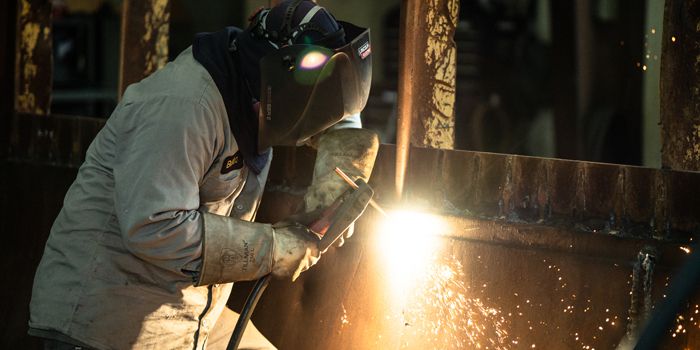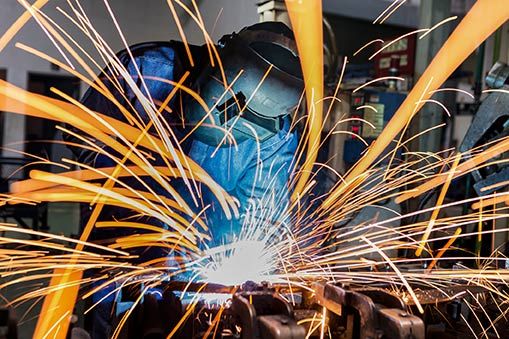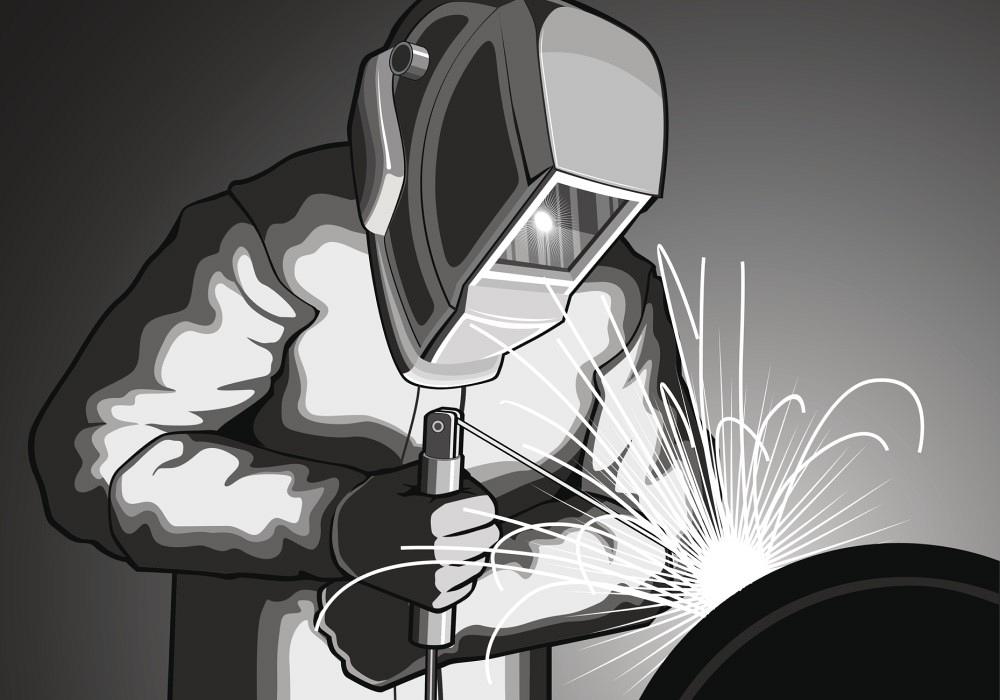Common Welding Repair Work Issues and Just How to Address Them Successfully
Welding repair work typically encounter a series of problems that can endanger the integrity of the end product. Common problems include poor infiltration, porosity, and misalignment, to name a few. Each defect provides distinct obstacles that need particular techniques for resolution. Comprehending these concerns is vital for welders intending to enhance their end results and abilities. This discussion will certainly explore these common welding fixing concerns and reliable techniques to address them.
Inadequate Infiltration
Insufficient penetration takes place when the weld steel stops working to completely fuse with the base material, causing weak joints and potential architectural failings. This concern commonly originates from inadequate heat input, wrong electrode angle, or inappropriate welding speed. Welders might run into insufficient penetration as a result of a miscalculation of the required specifications for a particular material thickness or kind. Furthermore, contamination on the base material's surface area can hinder effective bonding, intensifying the trouble. To attend to insufficient penetration, welders must ensure suitable setups on their equipment and keep a clean work surface. Normal examination of welds is recommended to identify any type of deficiencies early, permitting prompt adjustments and the avoidance of endangered structural stability in welded settings up.
Porosity
Porosity is a typical defect in welded joints that shows up as little gas bubbles caught within the weld metal. This flaw can compromise the honesty of the weld, leading to minimized stamina and potential failing under stress and anxiety. Montana Mobile Welding and Repair Belgrade Welding. Porosity generally occurs from contamination, dampness, or inappropriate welding techniques, which enable gases to escape into the molten weld swimming pool. To attend to porosity, welders must guarantee proper surface prep work, keep a clean workplace, and make use of appropriate welding specifications. Additionally, picking the best filler product and shielding gas can minimize gas entrapment. Regular inspection and screening of welds can aid determine porosity early, ensuring timely corrective actions are taken, consequently maintaining the top quality and integrity of the bonded framework
Imbalance
Imbalance in welding can arise from numerous variables, consisting of inappropriate arrangement and thermal development. Recognizing the root causes is necessary for reliable resolution. Several correction strategies are available to straighten parts and assure architectural honesty.
Causes of Misalignment
Welding imbalance often comes from a selection of underlying concerns that can compromise architectural honesty. One key cause is improper fit-up of elements prior to welding, which can bring about voids and irregular surface areas. Variations in thermal growth during the welding process can additionally cause distortion, specifically if the materials being joined have various coefficients of development. Furthermore, inadequate fixturing and clamping might stop working to hold parts safely in place, resulting in activity during welding. Poorly conserved tools, including welding devices and tools, may introduce inconsistencies in the weld bead, more contributing to misalignment. Driver mistake, stemming from insufficient training or experience, can likewise play a significant role in developing misaligned welds.

Correction Methods Readily Available
Addressing misalignment efficiently needs a mix of corrective techniques customized to the particular concerns at hand. One typical approach is using fixtures or jigs to hold components in the proper position throughout welding, ensuring consistent placement. Additionally, preheating the materials can help reduce distortion and improve fit-up. For considerable imbalance, mechanical adjustment techniques, such as utilizing hydraulic jacks or clamps, can be used to remedy the setting before welding. Post-weld heat treatment may likewise be required to eliminate stresses caused by imbalance. Lastly, cautious assessment and modification during the arrangement stage can stop misalignment issues from becoming considerable issues, promoting a smoother welding process and boosting total structural stability.
Distortion
Distortion is an usual challenge in welding that can arise from numerous elements, including uneven heating & cooling. Recognizing the reasons for distortion is vital for applying effective avoidance techniques. Resolving this problem not only boosts structural integrity however additionally boosts the overall top quality of the weld.
Sources of Distortion
When subjected to the extreme heat of welding, products commonly undergo adjustments that can lead to distortion. This phenomenon mainly develops from thermal development and tightening throughout the welding process. As the weld area heats up, the product broadens; upon cooling, it gets, which can create inner tensions. Furthermore, unequal home heating across a workpiece can intensify these anxieties, causing warping or bending. The sort of material likewise plays a significant function; steels with differing thermal conductivity and coefficients of site web development may respond in a different way, leading to unpredictable distortions. Additionally, inadequate joint layout and inadequate fixturing can contribute to imbalance throughout welding, enhancing the chance of distortion. Comprehending these causes is crucial for effective welding repair service and prevention strategies.
Prevention Techniques
Effective prevention strategies for distortion throughout welding concentrate on regulating warmth input and guaranteeing appropriate joint style. Maintaining a constant warm input assists to decrease thermal development and contraction, which can cause distortion. Utilizing techniques such as preheating the workpiece can also decrease the temperature level slope, promoting uniform home heating. Furthermore, picking proper joint designs, such as T-joints or lap joints, can boost stability and lower tension focus. Applying appropriate fixturing to safeguard the workpieces in position additionally aids in maintaining positioning during the welding procedure. Finally, staggered welding series can disperse warm much more evenly, stopping localized distortion. By applying these techniques, welders can greatly decrease the probability of distortion and improve the total high quality of their welds.
Breaking
Fracturing is a typical issue encountered in welding repair work, usually arising from different variables such as inappropriate air conditioning prices, material choice, or inadequate joint prep work. The occurrence of splits can considerably endanger the honesty of the weld, leading to prospective failings throughout operation. To address this problem, welders have to initially assess the origin, making certain that materials work and properly picked for the details application. In addition, managing the cooling rate during the welding process is crucial; this link quick air conditioning can generate stress and anxiety and lead to cracking. Correct joint layout and preparation also add to reducing the danger. Implementing these methods can enhance weld quality and resilience, ultimately lowering the chance of cracking in completed weldments.

Incomplete Combination
A significant concern in welding repair work is insufficient combination, which takes place when the weld metal does not sufficiently bond with the base material or previous weld passes - Montana Mobile Welding and Repair Belgrade Fabrication. This defect can result in weak points in the joint, potentially compromising the honesty of the bonded structure. Elements adding to insufficient combination consist of not enough warmth input, inappropriate welding method, and contamination of the surfaces being signed up with. To resolve this issue effectively, welders ought to guarantee correct pre-weld cleansing and surface area prep work, as well as adjust their welding criteria to attain ample penetration and blend. Regular assessment throughout the welding procedure can also help recognize incomplete combination early, permitting prompt restorative steps to enhance the overall high quality of the weld
Overheating
While welding repair work can improve structural stability, overheating offers a considerable difficulty that can cause product deterioration. Too much warmth throughout welding can alter the mechanical properties of metals, leading to reduced stamina, enhanced brittleness, and bending. This sensation is specifically critical in high-stress applications where structural reliability is vital. Identifying overheating can involve aesthetic examinations for staining or distortion, in addition to checking temperature during the welding procedure. To minimize the dangers connected with overheating, welders should employ appropriate techniques, such as regulating warm input, adjusting traveling rate, and making use of appropriate filler materials. In addition, applying pre- and post-weld warm treatments can assist restore product residential or commercial properties and boost the general quality of the repair, making certain lasting performance and safety and security.
Often Asked Questions
What Are the Usual Signs of a Welding Issue?

Just How Can I Test My Welds for Top quality?
To test welds for quality, one can utilize visual evaluations, ultrasonic testing, and radiographic techniques. Each method ensures architectural stability, recognizes flaws, and validates adherence to defined standards, eventually boosting the reliability of the bonded joints.
What Security Preventative Measures Should I Take While Welding?
When welding, one must focus on safety and security by wearing appropriate individual safety devices, guaranteeing appropriate air flow, securing combustible materials away, preserving a tidy workspace, and knowing surroundings to protect against injuries and mishaps.
Can I Repair a Weld Without Renovating the Entire Joint?
Fixing a weld without redesigning the entire joint is possible, depending on the damages (Montana Mobile Welding asme 9 and Repair Belgrade). Techniques such as grinding, including filler product, or making use of a welding process can successfully address specific defects while protecting the bordering framework
What Equipment Are Important for Effective Welding Repair Works?
Important tools for efficient welding repairs include a welding device, wire brush, mill, protective equipment, clamps, and filler materials. Each device plays a vital function in ensuring high quality and safety throughout the repair procedure. Porosity normally occurs from contamination, moisture, or incorrect welding techniques, which enable gases to run away into the molten weld swimming pool. Badly kept tools, including welding equipments and tools, might introduce disparities in the weld grain, further contributing to imbalance. When subjected to the intense heat of welding, products often go through modifications that can lead to distortion. Breaking is an usual issue experienced in welding repair services, frequently resulting from different aspects such as inappropriate cooling rates, product option, or poor joint preparation. A considerable problem in welding fixings is insufficient fusion, which occurs when the weld metal does not effectively bond with the base product or previous weld passes.
Comments on “How to detect and repair weld flaws in Montana Mobile Welding and Repair Belgrade Welding”